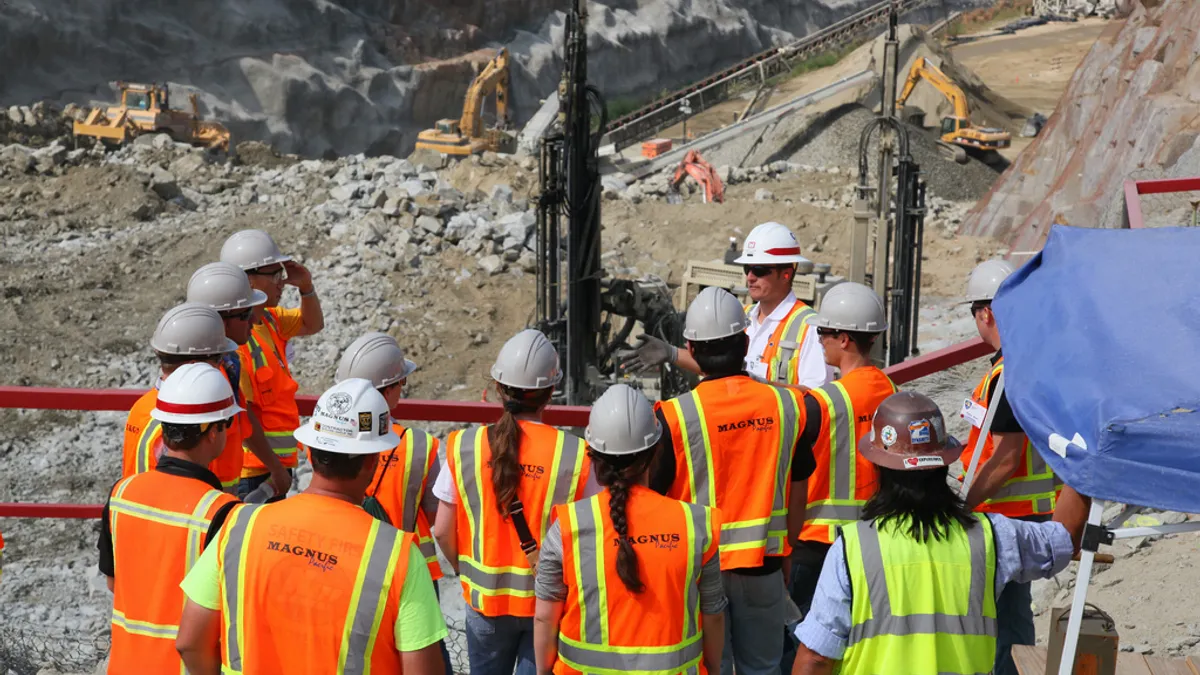The U.S. construction industry created more than 200,000 jobs in 2014, a reflection of the steady demand for buildings, road work, and new homes, according to the latest data from the ADP Research Institute.
The predicament
But usurping that good news are these reports:
- Construction executives in Atlanta rank difficulty filling open jobs as the industry’s top uncertainty, according to Sterling Risk Advisors, a risk management and insurance firm.
- The Associated General Contractors of America reports that 83% of contractors are having trouble finding qualified skilled labor to meet the demand.
- Homebuilders in Southwest Florida note it’s taking longer than usual to finish jobs because they can’t find skilled workers to staff their crews.
- While engineering and construction executives in FMI’s Nonresidential Construction Index panel say they are “strongly optimistic” about the industry and the economy, that sentiment is muted by concern over the lack of a skilled workforce.
The National Association of Home Builders and the Bureau of Labor Statistics deemed December 2014 the third highest month of unfilled construction jobs since the recession ended. BLS is predicting the construction industry will face a shortage of 1.6 million workers by 2022.
The cause
With plenty of open jobs and a steady stream of incoming projects, construction firms and homebuilders can offer reliable, well-paying gigs to workers who qualify for positions ranging from unskilled laborers, to skilled trades, to professional designers and managers, to office staff.
Yet, job-hunters aren’t lining up to fill those roles. Industry observers point to a variety of culprits:
- High schools, over the years, have shifted their focus from teaching job skills to preparing students for college.
- During the recession, the construction industry laid off almost 2 million workers. Now that the economy is improving, it needs those crew members back—at least the skilled ones. But those experienced workers have already found other jobs or have retired from the workforce.
- Many available workers don’t have the skills needed on job sites. So even though unemployment rates are still high in some areas of the country, the skills of the job seekers don’t quite fit the needs of construction employers.
- The oil and gas industries over the past couple of years have poached construction workers right off of job sites with the promise of higher pay and hefty bonuses. That has created an even deeper shortage of qualified construction crews.
The prescription
Commercial insurance and risk management company Gibson advises its construction-industry clients: “Don’t get bogged down by the challenges presented with the labor shortage. Be proactive with your recruiting, hiring, and workforce management strategies to help combat this issue.”
Here are 10 ways construction firms and builders can ease the pain of the labor shortage:
1. Create a safe place to work. Companies with a culture of safety and a reputation for taking care of their own are more attractive to skilled workers who are shopping around for the best jobs.
2. Carefully screen job applicants. Make sure to hire employees who have the right skills and who plan to stick around. Replacing employees is difficult and expensive. Retention is an effective way to keep crews staffed.
3. Constantly train employees. Whether they’re new or have been around for a while, help employees keep their skills up to date, and encourage long-timers to mentor and pass their knowledge on to newcomers. Enlist manufacturers of the products you buy to train your crews.
4. Coach the employees of the future. Offer to mentor students at local high schools and vocational schools. Work with high schools to identify students who are not suited for the four-year college track, and redirect them to construction apprenticeships and craft training programs that teach technical skills and prepare them to work in the industry.
5. Crank up pay and benefits. When there’s stiff competition among builders for crews as well as contracts, the employer with the best perks and pay is likely to win at recruiting.
6. Cater to older employees. They’re typically loyal and experienced, and losing them to retirement or to competitors can sting. Offer the same training opportunities to middle-aged workers as to the younger crews, and take their needs into consideration when evaluating jobsite safety.
7. Commit to hiring vets. Just about a year ago, 100 construction companies joined first lady Michelle Obama and officials from the U.S. Department of Labor to pledge that they would hire 100,000 veterans over the next five years. To that end, the federally funded Helmets to Hardhats program connects military members who are transitioning to civilian life with career training and job opportunities in the construction trades. The program is sponsored by 15 trade unions and industry associations.
8. Catch them on the rebound. The situation has changed on oilfields, where drillers have begun to lay off workers who are highly trained in some of the same skills needed on construction sites. Aggressively recruit those qualified workers, who won’t be out of work for long, given that your competitors are hoping to beat you to them.
9. Co-op with manufacturers. Work with manufacturers to bundle installation with sales so their well-trained crews put in windows and install other products for you. The more they do for you, the fewer hard-to-find trades you’ll need to hire.
10. Connect with other organizations. Join national industry groups that are pushing for legislative reforms and the funding of vocational education. Lobby Congress, your state Legislature, and local authorities—on your own or through industry organizations—for legislation friendly to the construction industry and to employers.













